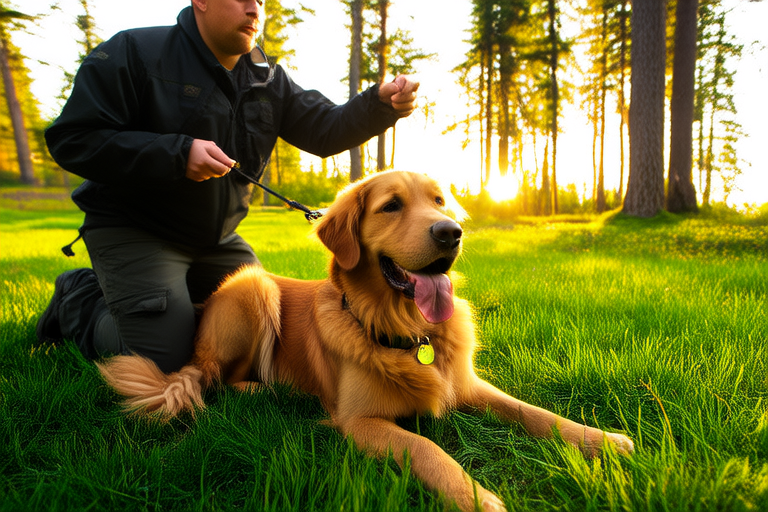The Ultimate Guide to Training Your Pet: Lessons from Norwegian Experts
Welcome to The Ultimate Guide to Training Your Pet, a comprehensive resource inspired by the expertise of Norwegian animal behaviorists and trainers. Whether you’re a seasoned pet owner or a first-time guardian, this guide will provide you with valuable insights into understanding your pet’s behavior, effective training techniques, and overcoming common challenges. Dive into the world of pet training with us as we explore what makes Norwegian methods unique and effective.
Understanding Your Pet’s Behavior
Before diving into training techniques, it’s essential to understand your pet’s natural behaviors. Different animals have distinct communication styles, instincts, and needs. For instance, dogs are pack animals that rely heavily on social cues, while cats are more independent, preferring solitude and privacy. Understanding these differences can help tailor training approaches to each species.
Norwegian experts emphasize the importance of recognizing your pet’s body language. A wagging tail in dogs might indicate excitement or happiness, but it could also signal nervousness or aggression if paired with tense muscles. Similarly, cats may show discomfort through flattened ears or a puffed-up tail. By learning to read these signals, you can respond appropriately and avoid misinterpretations.
Effective Training Methods
Positive Reinforcement
One of the most popular and effective training methods globally, positive reinforcement involves rewarding desired behaviors. This approach has been scientifically proven to be highly successful in shaping animal behavior. Norwegian trainers recommend using treats, praise, and affection as rewards when your pet exhibits good behavior. For example, if your dog sits on command, immediately give them a treat and say “good boy/girl.” Over time, the dog will associate sitting with positive outcomes, reinforcing the behavior.
Clicker Training
Clicker training is another method widely used in Norway. It involves using a clicker device to mark the exact moment your pet performs a desired action. This method helps pinpoint specific behaviors and provides instant feedback. Once the click is heard, the pet knows they’ve done something right and will receive a reward. Clicker training is particularly useful for teaching complex tricks or commands.
Consistency is Key
Regardless of the method chosen, consistency is crucial. Norwegian experts stress that pets need clear, repetitive guidance to learn effectively. Establishing a routine for training sessions and using the same commands ensures your pet understands expectations. For example, always use the word “sit” when asking your dog to sit down; avoid mixing up commands like “sit” and “down.”
Behavioral Insights Specific to Different Pets
Dogs
Dogs are highly social creatures and thrive on interaction. Norwegian trainers suggest incorporating playtime into training sessions to keep dogs engaged. Fetch games or tug-of-war can serve dual purposes – entertainment and exercise. Additionally, dogs benefit from structured environments. Setting up designated areas for sleeping, eating, and playing helps establish boundaries and routines.
Cats
Cats are more independent than dogs but still require attention and mental stimulation. Norwegian experts recommend interactive toys that mimic prey, such as feather wands or laser pointers. These activities not only entertain cats but also satisfy their hunting instincts. Cats also appreciate vertical spaces like cat trees or shelves, providing them with elevated vantage points and safe resting spots.
Practical Tips for Effective Training Sessions
Creating an ideal environment for training is crucial. Choose a quiet space free from distractions to ensure your pet focuses on the task at hand. Short, frequent sessions (5-10 minutes) are more effective than long, drawn-out ones. This keeps both you and your pet attentive and prevents fatigue.
Timing rewards correctly is equally important. Reward immediately after the desired behavior occurs to strengthen the association. Delayed rewards can confuse your pet, leading to slower progress.
Common Challenges Faced by Pet Owners and Their Solutions
Barking and Whining
Barking and whining are common issues among dogs. Norwegian trainers suggest addressing these behaviors by identifying triggers. If your dog barks excessively when left alone, consider crate training or leaving a radio on for company. Teaching alternative behaviors like fetching a toy can also redirect their energy.
Aggression
Aggression in pets, whether towards humans or other animals, requires careful handling. Norwegian experts advise seeking professional help if aggression persists. They emphasize the importance of early intervention and consistent management strategies. Desensitization and counter-conditioning techniques can be beneficial in reducing aggressive tendencies.
How Norwegian Training Techniques Differ or Excel
Norwegian training methods often incorporate a holistic approach, focusing not just on obedience but also on building strong bonds between pets and their owners. They place significant emphasis on understanding the emotional needs of animals, ensuring training is enjoyable and stress-free.
For instance, Norwegian trainers encourage owners to engage in regular outdoor activities with their pets. This promotes physical health and mental well-being, making pets more receptive to training. They also advocate for a balanced diet tailored to each pet’s age, breed, and activity level, which contributes to overall behavior stability.
Real-Life Examples
Consider the case of Lisa, a Norwegian dog owner whose golden retriever, Max, had developed severe separation anxiety. After consulting a local trainer, Lisa implemented a routine that included daily walks, interactive play sessions, and gradual desensitization exercises. Within months, Max’s anxiety levels decreased significantly, and he became more comfortable being left alone.
Another example is John, who adopted a Siamese cat named Luna. Initially, Luna was shy and unresponsive. Following Norwegian training advice, John introduced interactive toys and created cozy hideaways around the house. Gradually, Luna became more confident and playful, forming a stronger bond with John.
Conclusion
Training your pet is an ongoing process that requires patience, dedication, and understanding. By adopting Norwegian training techniques and insights, you can enhance your relationship with your pet while fostering good behavior. Remember, every pet is unique, so adapt your approach based on individual needs and responses. With consistent effort and love, you’ll enjoy a harmonious and fulfilling partnership with your furry companion.
